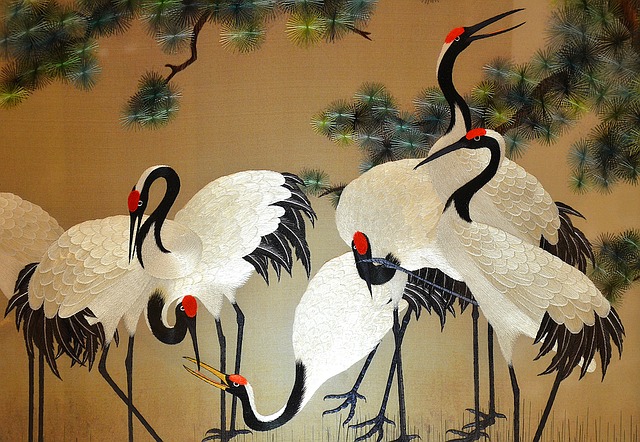Workshop Segment One
Overview and introduction for the Obsidian Essence approach to spiritual development.

The Obsidian Essence approach to spiritual development is a synthesis of Taoist Inner Alchemy and developmental insights and practises that come from the Human Design system.
Taoist Inner Alchemy is unusual and possibly unique in the way that it approaches spiritual development. We customarily think of spiritual development as the cultivation of higher consciousness, accompanied by an effort to heal what is perceived to be broken in us and develop what is under-developed in us. Taoist Inner Alchemy looks at our situation differently. The undeveloped nature of our ordinary consciousness and the brokenness that goes with this is seen as a state of disharmony masking an underlying potential for harmony. The notion is that we each have a core true nature that is hidden behind a constructed and unconscious false nature. When we become aware of the constructed and unconscious false nature and it is dissolved, we come to rest in and come alive in our core true nature. Taoist Inner Alchemy is therefore a journey of coming to an awake resting in our core true nature. Effort, goals, fixing, and achievement are of no value, while refinement and harmonizing are of great value. We are seen to be alive to encounter the possibility of calming the wildness in ourselves like a horse whisperer calms an agitated and disturbed horse. It is a journey of waking up to and releasing everything that came together to create the wildness and agitation in us, thus bringing us into living the uniquely exquisite core self that has been hidden inside the agitated wildness.
Ra Uru Hu, speaking about the relationship between Human Design and spiritual development, said that, “Human Design takes an enormously deep spiritual concept and just turns it into simple mechanics because that‘s what the mechanics reveal.” This at first appears to be an impossible idea for those who have followed a traditional modern spiritual path. The primary characteristic of spiritual realization is believed to involve dissolution into the formless and freedom from being stuck in maia. It is important to look into what Ra Uru Hu means when he says that spiritual realization is enabled through an understanding of the mechanics of maia.
There is a fundamental difference in perspective between what Taoist inner alchemists call going with the course, the approach to life that has led us to actualize an unconscious false nature, and inverting the course, the approach of Taoist Inner Alchemy.
In this workshop segment we will go into our ideas about reality, consciousness, and spiritual development, with the intention of grasping how Taoists understand these notions differently than we may have understood them until now.
We will also explore the relationship between Human Design mechanics and spiritual realization.

We will look into our understanding of the Taoist approach to spiritual reality with the following considerations:-
-
what is unconsciousness?
-
what is alchemy and how does it bring about transformation?
-
how is ordinary reality and the reality of Tao different?
-
how can we understand ourselves as consciousness in biological form?
-
we will examine our ideas about being, knowing, understanding, and experience.
-
we will ask ourselves how we understand who we are and where we are going.
-
we will look into what the culture of Taoists is like.
-
we will look into the role of love in Taoist reality.

In exploring the relationship of Human Design mechanics and spiritual realization, we will explore the following:-
-
basic Human Design ideas about reality.
-
how these ideas are represented in a Human Design chart.
-
what, from a Human Design perspective, is a life journey lived without any attention paid to our potential for development of any sort, other than being educated, becoming skilled, and living life as it unfolds at the mundane level, – the kind of lives that “normal” people live.
-
what, from a Human Design perspective, is a life journey lived as a modern spiritual seeker, without consideration of Human Design understandings.
-
what, from a Human Design perspective, is a life journey lived according to Human Design understandings and in the Taoist perspective of going with the course.
-
what, from a Human Design perspective, is a life journey lived according to Human Design understandings and in the Taoist perspective of inverting the course, in the synthesis of Human Design understandings and Taoist Inner Alchemy.
These explorations will be done in relation to each person's Human Design imprinting, looking at the information in each person's Human Design chart.

Although a Taoist view of reality and the developmental journey puts simplicity first, this does not mean that entering into a developmental journey in this style will be easy. We will examine how the journey may unfold, and what may be involved in letting go of our acculturated ways of understanding reality and of our traditional ideas about the journey of development. Going on this journey involves a peculiar commitment to relaxation and to giving up goals and striving, and also an openness to staying with the process through the time it takes for the alchemy to work, and through some very deep places of transformative suffering.
This basic overview and introduction to Obsidian Essence begins with Taoist inner alchemy and aims to introduce students to related Human Design understandings by degrees as they progress through the series of Obsidian Essence workshop segments.
When presenting the overview and introduction for the Obsidian Essence approach to spiritual development to those who have already an established familiarity with the Human Design system, a different approach is taken.
This approach sees the developmental journey as one where a marriage takes place between the design imprint and the personality imprint. The starting point finds the not-self dominating the life experience. The personality consciousness is deviated from its true nature as a witnessing consciousness and instead is involved with managing life by taking the conditioned not-self as the self that is living life. The true self is the potential marriage between the personality imprint and the design imprint.
The practise of strategy and authority offer a stance that the student can take to orient the personality consciousness away from the not-self and towards the potential harmony between the personality imprint and the design imprint. The stance of strategy is a way of drawing the attention of the personality consciousness away from habitually unconscious not-self behaviour and towards the behavioural wisdom of the body. The stance of authority is a way of drawing the attention of the personality consciousness away from conceptually figuring out what one's truth is and towards the ability of the body to directly know what is the truth of one's life journey. The journey of inverting the course consists of a long series of reorientations where the not-self mind consciously surrenders to the wisdom of the body.
Each aspect of conditioning involves a not-self behaviour that serves to avoid experiencing an underlying vulnerability. An instance of reorientation begins with connecting to the experience of the underlying vulnerability. It continues with understanding how the not-self behaviour is related to the not-self configuration in one's Human Design chart. It moves into a process of resolution when the personality consciousness understands the relationship between the experience of the not-self pattern and the insight into how it is uniquely configured in one's Human Design. The experience of the conditioned not-self is one of feeling the helpless addiction to a behaviour that is not congruent with the potential marriage of the personality and design imprints.
The personality consciousness witnesses the nature of this not-self behaviour. It can see how this behaviour is related to a specific lived experience of painful vulnerability. A moment of understanding the nature of the conditioning occurs in due course. This enables a process of unwinding the conditioning to take place over time. The patterns that explain the conditioning can be seen in the Human Design chart. Informed with this knowledge, the personality is ready to associate the lived experience of a specific vulnerability with a specific aspect of conditioning.
Parallel to the process of deconditioning there is also a process of getting to know the characteristics of the personality and design imprints. Through being informed about specific characteristics such as type, strategy, inner authority, profile, incarnation cross, definition, signature, and not-self theme, the personality consciousness is informed about the true characteristics of the design and is ready to recognise these when they show up in the life experience. As this recognition deepens the marriage of the personality and design imprints slowly integrates.
Both the process of deconditioning and the process of recognition of the true self are fundamentally enabled by engaging with the stance of strategy and authority.
Taoist inner alchemy makes a distinction between life lived as going with the course and life lived as inverting the course. This distinction is not explicitly made when Human Design is taught in the conventional way. Western acculturation naturally orients to going with the course. Hence living one's Human Design is normally seen as the pursuit of an accurate engagement with the mechanics of life as understood through one's Human Design chart. This can lead to living as a new improved not-self that is practising life according to one's true self mechanics.
This is truly a great improvement on the conditioned not-self life that is inevitably lived without engaging with Human Design mechanical knowledge at all. A similar refining of the not-self life can be realised through engaging, according to a going with the course approach, with traditional spiritual developmental practises.
The different approach of Taoist inner alchemy, which adopts an approach of inverting the course, opens one to a fundamentally different orientation to one's spiritual development. In the synthesis of Taoist inner alchemy and Human Design mechanics, the Obsidian Essence approach makes it clear that the personality consciousness can be freed from managing the not-self. The personality consciousness sees the conditioning and in doing so enables the conditioning to be unwound. The personality consciousness sees the nature of the fulfilment that happens when the marriage of the personality imprint and the design imprint flourishes, and in doing so enables it to be lived. The way in which the not-self became established is associated with going with the course, and the way in which consciousness is brought to unwinding the not-self and engaging with the marriage of the personality and design imprints is associated with inverting the course. This allows the personality consciousness to fully retire from the deviated engagement with managing the conditioned not-self life, and allows for as complete a marriage of the personality and design imprints as one's life makes possible
The primary focus in this workshop segment, for people with an established engagement with Human Design, is to look into how Taoist inner alchemy changes a traditional journey of spiritual development, and into how a synthesis of Human Design with Taoist inner alchemy enables what Ra Uru Hu called the radical journey, where one realizes the fulfilment of one's unique purpose.